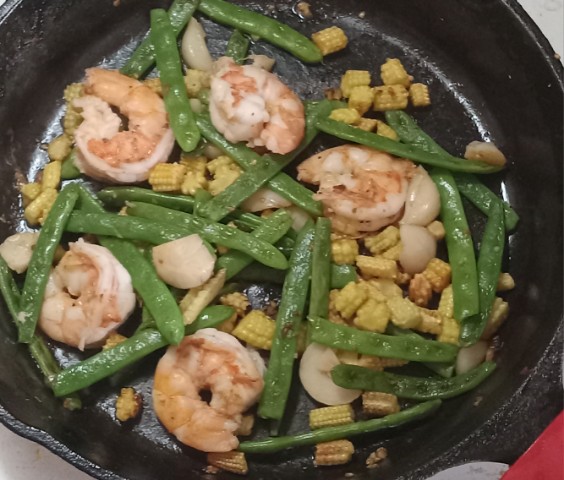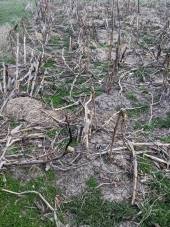

 4
4




Working toward a permaculture-strong retirement near sunny Sperling.
 2
2




Derek Thille wrote:After growing up with nothing but yellow corn (some variation in shade), I'm enjoying my relatively recent discovery of the variety of colours of corn kernels.
Our recent attempts have included Mandan Bride, Assinibioine Flint, Tom Thumb popcorn, and possibly Saskatchewan Rainbow Flint, from Heritage Harvest Seeds corn.
Our spring trip to Peru opened our eyes further as well with the development done in Inca times for different purposes including for varying microclimates.











 3
3




Thom Bri wrote:
Same here. Since I started growing this corn I became interested in the colors.
Have you gotten any decent harvests that far north? How long is the growing season?
Working toward a permaculture-strong retirement near sunny Sperling.
 8
8




 6
6




 7
7




 4
4




 2
2




Dirty hands + a sweaty handkerchief = hope for the future.
 5
5





Zone 6, 45 inches precipitation, hard clay soil




 4
4




Cy Cobb wrote:Always glad to see these updates!
I've had quite a few disappointments this year as I tried to expand my growing space to trial more seed. I lost a lot of time & high-value (to me) landrace/grex bean seed from various sources due to weather, rodents, birds, & insect pests. I was successful in expanding the breadth of genetics in my 3rd year watermelon and C. Moschata (pumpkin phenotype) grexes, so they are both coming along very nicely considering the hardships they've survived.
Now, I'm adjusting plans for next year and ready to get planting!
Keep the updates coming
 2
2




May Lotito wrote:I have been picking sweet corns recently too. As for the small ears I decided to use them as baby corns instead of spending more time on those.
It's been exactly one month since I planted morando corns and they are all tasseling and some silking. Tropical corns are photoperiod sensitive so that may explain the early maturity.
 4
4




Zone 6, 45 inches precipitation, hard clay soil




 5
5




 5
5




 4
4




 5
5




 7
7




Zone 6, 45 inches precipitation, hard clay soil




 1
1




May Lotito wrote:The leftover corn stalks can be used for crafting too. The high color contrast of yellow and dark colored stalks is great for teaching kids about different weaves and make little crafts out of them. Here is a triaxial weave or mad weave coaster just for fun.











 3
3




Working toward a permaculture-strong retirement near sunny Sperling.
 6
6




 3
3




 4
4




Zone 6, 45 inches precipitation, hard clay soil




 1
1




May Lotito wrote:I stripped the leaves off sweet corn stalks when they were done to give the beans more sunlight. Remaining stalks make great green bean trellis.
 4
4















 2
2




Thom Bri wrote:So back to my normal method. Plant beans when the corn is up, and squash when the beans are up. I can also plant the corn much later. This year was abnormally early, at the end of April. Didn't seem to hurt the corn, except that germination was poorer than I expected.
Working toward a permaculture-strong retirement near sunny Sperling.
 4
4




Derek Thille wrote:
You may have noted it earlier in the thread, but are you able to direct sow your squash where you are? Here, the season is short enough that we generally need to start with plant starts / seedlings. I'm concerned if I followed your method with starts that the squash might overwhelm the young beans. Of course, transplants do seem to take a bit of time to really get going so it may not be that bad, especially if I plant them a bit farther out. Thanks.
 2
2




 3
3




 2
2




Zone 6, 45 inches precipitation, hard clay soil




 2
2




Do, there is no try --- Yoda
No one is interested in something you didn't do--- Gord Downie
 3
3




May Lotito wrote:I've seen people shelling corns with two ears rubbing against each other, not with your fingers. The commercial corns in the background seem to have a long way to go. How much bigger can they get with a longer season? The closest corn field near me is over 10 miles away and the corns are totally dry by now.
 1
1




Jeff Marchand wrote:Maybe this has been asked before, but has anyone ever tried replacing corn with sunflowers? I think I'd like to have 2 3-sisters gardens , one with corn and the other sunflowers. My squashes have impressed me with how much elbow room they need.
 3
3








Christopher Weeks wrote:This will be my fifth year growing three sisters -- I started with mounds and after the second year switched to a big patch and this year I'm moving in the direction of the milpa..
 2
2




 2
2




 1
1




 1
1




Dirty hands + a sweaty handkerchief = hope for the future.
 1
1




Cy Cobb wrote:Very cool!
Can you tell us what the growth characteristics are for the glass gem?
Does it produce multiple ears?
Is the stalk thin like popcorn?
Do you plant more seed in the same space as your bigger corn, or do you just mix it in & treat it the same? TIA
 2
2




Zone 6, 45 inches precipitation, hard clay soil





|
I like you because you always keep good, crunchy cereal in your pantry. This tiny ad agrees:
The new kickstarter is now live!
https://www.kickstarter.com/projects/paulwheaton/garden-cards
|









